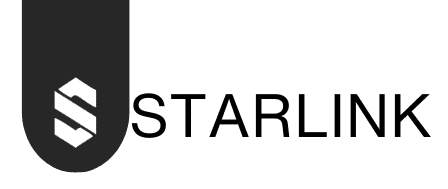Unlocking the Potential of Effective Strategies
In the ever-evolving digital landscape, Search Engine Optimization (SEO) has become a cornerstone for businesses seeking growth. For B2B companies, this means adapting SEO practices to target business decision-makers, streamline lead generation, and enhance visibility. “SEO for B2B Rankstar” is not just a trending phrase—it encapsulates the specialized strategies needed for businesses to stand out in competitive industries.
This article delves deep into actionable techniques and insights for implementing an effective SEO strategy for B2B companies. The goal? Ensure your business achieves higher rankings, attracts the right audience, and fosters sustainable growth.
Why SEO for B2B Rankstar Matters
Unlike B2C companies that cater to individual consumers, B2B enterprises focus on providing solutions to other businesses. The buying cycle is typically longer, involving multiple stakeholders and extensive research. Therefore, implementing a robust SEO strategy tailored for B2B ensures that your brand remains visible to key decision-makers at critical touchpoints of their journey.
By leveraging “SEO for B2B Rankstar,” businesses can position themselves as industry leaders, drive organic traffic, and ultimately increase revenue through high-value partnerships.
Comprehensive Keyword Research: The First Step to Success
Keyword research is the foundation of any effective SEO strategy. For B2B companies, this step involves identifying terms and phrases that resonate with their audience’s specific needs.
Focus on long-tail keywords that indicate high intent. For example, instead of targeting “digital marketing,” opt for “digital marketing solutions for enterprise software companies.” This specificity not only drives qualified leads but also reduces competition.
Additionally, semantic keywords such as “ecommerce SEO Rankstar,” “fintech SEO Rankstar,” or “SaaS SEO Rankstar” can complement your main focus keyword, enhancing relevance and depth without overloading the content.
On-Page Optimization: Enhancing Visibility
On-page SEO ensures that your website is search-engine friendly while providing a seamless user experience. Here’s how to do it right:
- Title Tags and Meta Descriptions: Craft concise, keyword-rich titles and descriptions. Ensure they are compelling enough to increase click-through rates (CTR).
- Header Tags: Use H1, H2, and H3 tags to structure your content logically, making it easier for readers and search engines to understand.
- Content Quality: Integrate the keyword “SEO for B2B Rankstar” naturally within the content. Aim for balance, avoiding keyword stuffing while maintaining a focus on relevance.
For example, a blog post titled “Ecommerce Seo Rankstar – Enhance Your Growth“ signals clear intent and is likely to rank well for the target keyword.
Content Marketing: Delivering Value to Your Audience
High-quality, relevant content is the backbone of any successful SEO strategy. When targeting business clients, focus on creating resources that address their pain points, challenges, and aspirations.
Types of Content to Consider:
- Case Studies: Showcase your expertise by detailing successful projects.
- Whitepapers: Offer in-depth insights on industry trends.
- Blog Posts: Regularly update your blog with actionable advice, such as “How SEO for SaaS Rankstar Can Transform Your Digital Strategy.”
- Videos and Infographics: Break down complex topics into digestible, shareable formats.
Each piece of content should strategically integrate secondary keywords like “SEO for CBD Rankstar” or “Fintech SEO Rankstar” to broaden your reach organically.
Technical SEO: The Backbone of Optimization
Technical SEO A technically sound website not only improves user experience but also ensures search engines can crawl and index your content effectively.
- Mobile Optimization: With most B2B searches happening on mobile devices, ensure your site is mobile-friendly.
- Site Speed: A fast-loading website reduces bounce rates and improves rankings.
- Schema Markup: Use structured data to help search engines understand your content better, enhancing the likelihood of rich snippets.
- HTTPS Security: A secure website builds trust and is a ranking factor.
Backlink Building: Establishing Authority
Backlinks are among the most influential ranking factors in SEO. They signal to search engines that your content is valuable and trustworthy.
Strategies to Build Backlinks:
- Guest Blogging: Write high-quality articles for industry-relevant sites.
- Outreach Campaigns: Connect with authoritative websites to earn backlinks.
- Content Promotion: Share your best resources widely to attract organic backlinks.
For instance, a well-researched piece on “SaaS SEO Rankstar” shared across LinkedIn can garner attention from industry professionals, increasing shares and backlinks.
Leveraging Analytics and Performance Metrics
SEO is not a one-time effort but an ongoing process. Regularly monitor your website’s performance to identify strengths and areas for improvement.
Key Metrics to Track:
- Organic Traffic: The number of visitors arriving via search engines.
- Bounce Rate: High bounce rates might indicate irrelevant content or poor user experience.
- Keyword Rankings: Keep tabs on how “SEO for B2B Rankstar” performs over time.
- Conversion Rates: Measure how well your site turns visitors into leads or customers.
By analyzing these metrics, you can refine your strategy to achieve better results continuously.
Staying Ahead of the Curve
The digital landscape is dynamic, with search algorithms evolving constantly. To remain competitive, keep up with the latest trends and adapt your strategies accordingly.
Emerging Trends to Watch:
- Voice Search Optimization: Tailor content for voice queries using conversational keywords.
- AI-Driven SEO Tools: Leverage AI to analyze data and uncover new opportunities.
- Core Web Vitals: Prioritize user experience metrics such as page speed and interactivity.
FAQs
What is SEO for B2B Rankstar, and why is it important?
SEO for B2B Rankstar refers to specialized strategies designed to improve search engine visibility for B2B businesses. It helps attract qualified leads, increase online presence, and drive business growth.
How is B2B SEO different from B2C SEO?
B2B SEO targets business decision-makers with a focus on longer sales cycles and multiple stakeholders, while B2C SEO focuses on individual consumers with shorter decision-making processes.
What are the key components of an effective B2B SEO strategy?
Comprehensive keyword research, high-quality content creation, technical SEO optimization, and a strong backlink profile are essential components of a successful B2B SEO strategy.
How can technical SEO improve my B2B website's performance?
Technical SEO ensures your website is optimized for mobile use, fast-loading, secure (HTTPS), and free of errors, making it easier for search engines to crawl and index your content.
What are some emerging trends in SEO for B2B businesses?
Voice search optimization, AI-driven tools, and a focus on Core Web Vitals are key trends shaping the future of B2B SEO.
Conclusion
“SEO for B2B Rankstar” is not just about achieving higher search engine rankings—it’s about building a robust digital presence that drives meaningful engagement and long-term growth. By focusing on tailored keyword research, high-quality content, technical optimization, and consistent performance monitoring, you can create a strategy that stands out in the competitive B2B space.
With these steps, Starlink Care will compete with and surpass top-ranking websites, ensuring sustainable success in an ever-competitive market.







